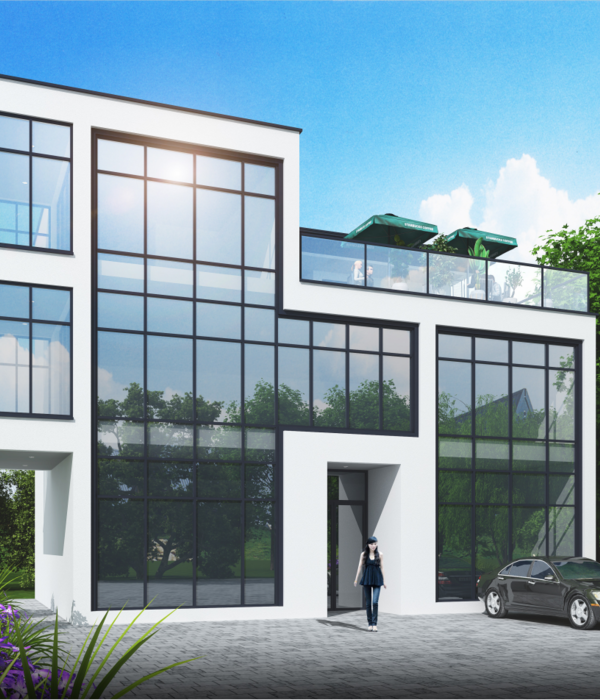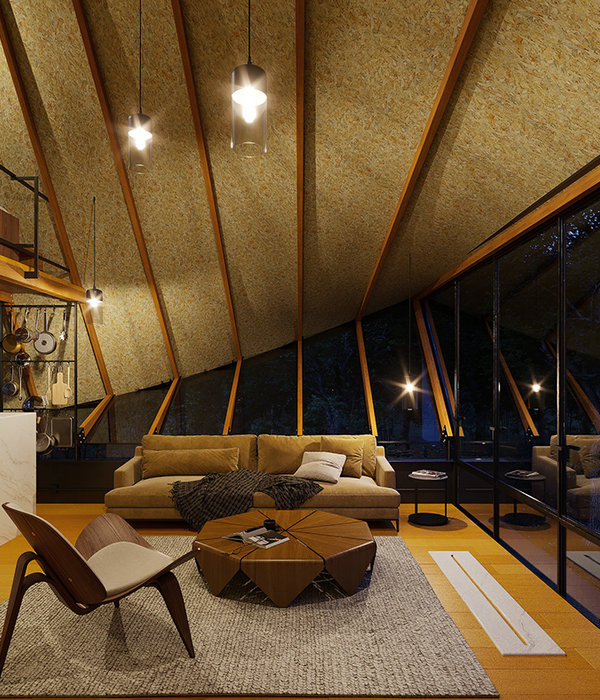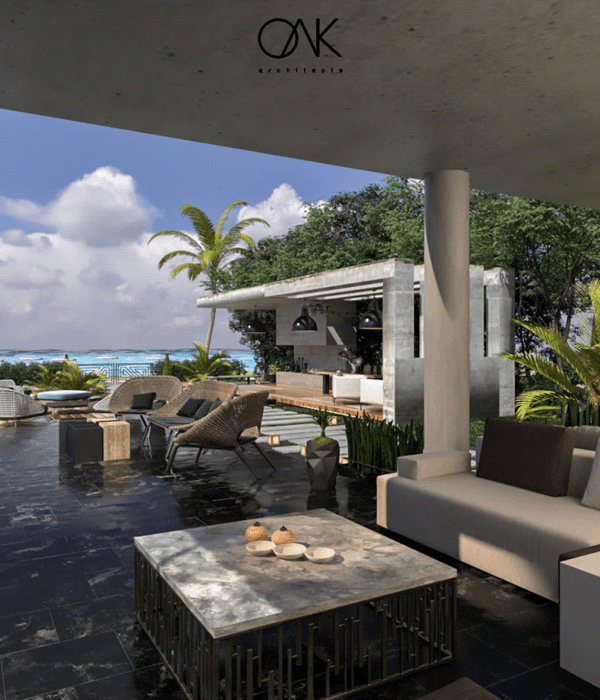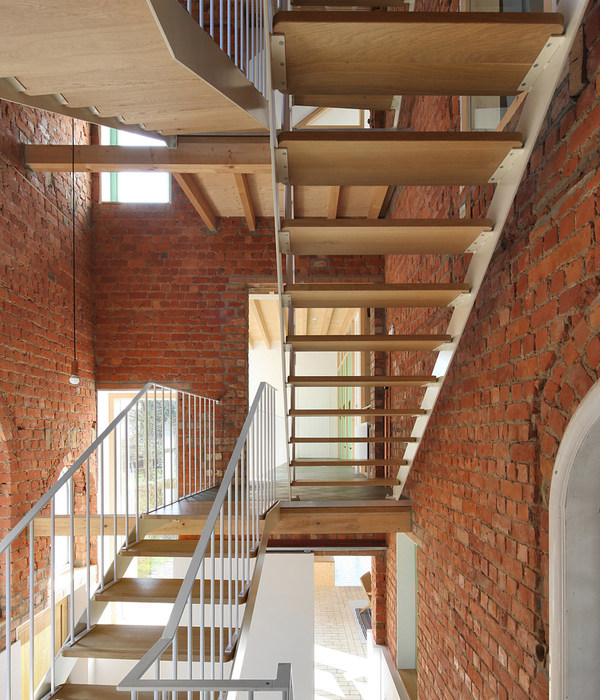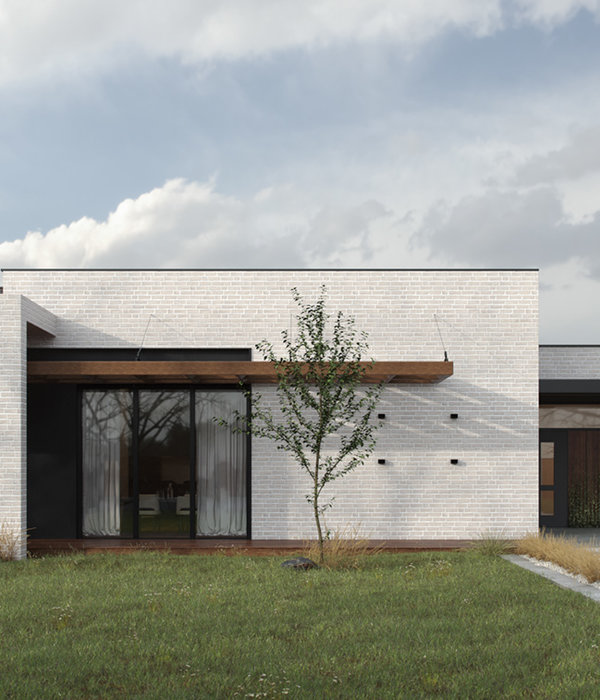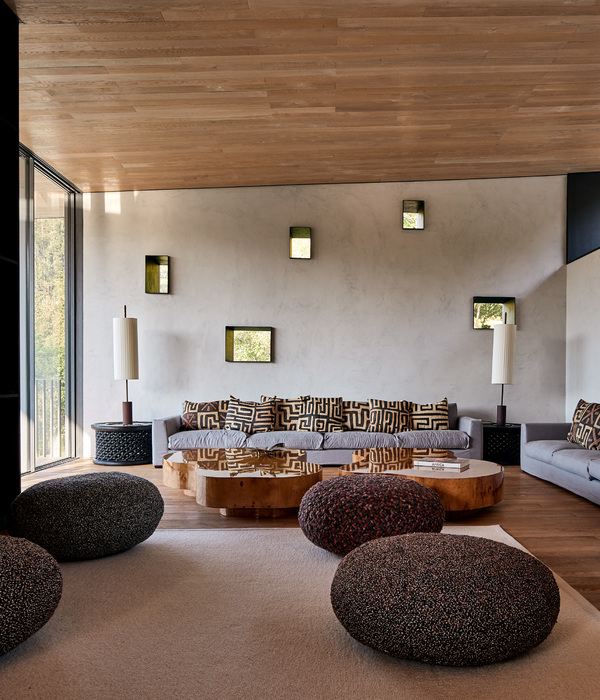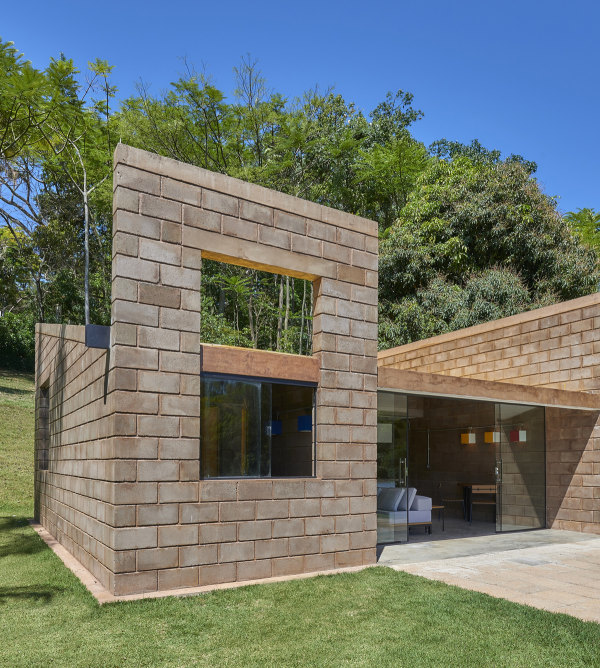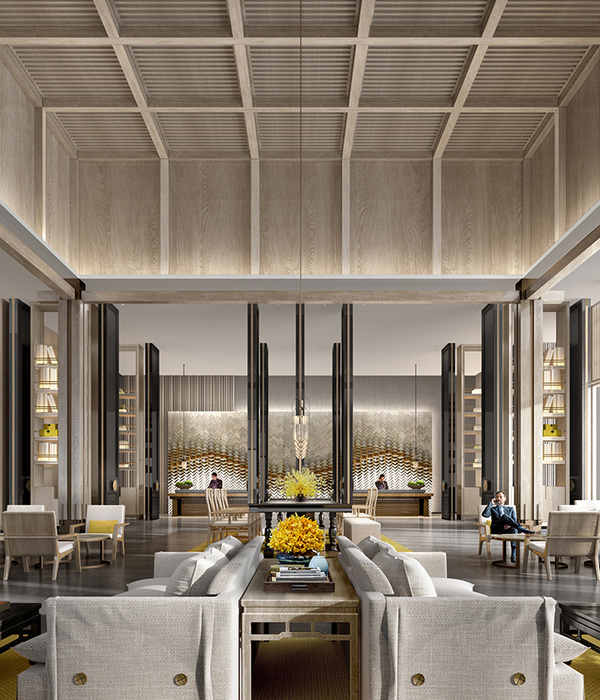Architect:Maison Edouard François;ABC Architectes
Location:54 Boulevard Gorbella, Nice, France; | ;
Project Year:2021
Category:Shops;Parks/Gardens;Housing
This project, located in town on the heights overlooking Nice, lies in the middle of a broad dale descending to the sea. A lovely urban boulevard runs straight down the middle of the dale, with one side densely urbanized and the other a chic and historic neighborhood of grand villas. On this latter side, nature is everywhere. A ten-minute tramway ride links the neighborhood of Le Ray to the city center. On the horizon, mountains and luxuriant hills surround the dale. One’s gaze finally comes to rest below on Nice’s old city center and the Mediterranean beyond. The landscape is typically luxuriant Mediterranean, with trees here and there reaching heights over 50 meters. This sun-drenched nature is watered by underground rivers.
The 24,500-m² program encompasses 250 first-time-buyer apartments, 100 units of social housing, a 6,000-m² Carrefour hypermarket, a 1,500-m² dojo. The project also possesses an underground parking garage with some 650 places. The overall density is a generous one in relation to the buildable footprint.
Broad views from the interior of the new city superblock open onto the glorious landscapes of Nice. The project echoes the urban quality of Manhattan in that it ensures a view of the horizon at the end of each block. Despite the apparent density when looking at the cross-section of the project, the heart of the development areas are available to the inhabitants for open-air chats or for reading in a wonderfully calm and peaceful atmosphere. They are in a garden with highly sought-after views of the hills of Nice.
The distant landscape joins that of the park and penetrates straight into the superblock. The intimate landscaping inside the superblock joins that of the park, bringing additional color to it. A highly botanically varied landscape is thriving here, in the tradition of Mediterranean gardens. We refer to it as the “garden extraordinaire”. It begins in the center of the superblock and extends to the park-like rivers of color. We are at the intersection of merging landscapes, one nearby and the other in the distance. The park is comprised of this merging of two parts. Its landscape architect, Jean Frédéric Gay, is the same one who designed the landscaping for our superblock. This was the most logical choice given we wanted the two landscapes to interpenetrate.
The smallest apartment house, on the corner of Boulevard Gorbella, is built with stone. This material is rarely massively used except for military facilities. Historically it is often faked or merely thin on the façade and employed massively or semi-massively to “muscled up” corners, edges around windows, and the base of façades: Versailles and the Louvre are built like this. The important thing is to never admit the true thickness of the material. In Le Ray, we built the negative of Versailles and the Louvre: corners and edges around windows are built with stone bricks for the cladding of the trumeaux and the façades. The result is a massive ensemble. The other buildings are covered with a lime-based coating, in colors selected from the city of Nice’s guidelines.
The façades are not “greened” but rather “support greenery.” In other words, behind the foliage is another façade in the background, the closed and covered façade. Standing in a highly seismic zone, these jardinières can only be made of concrete. They are left raw. We added a superstructure to the façades comprised of chestnut supports, with stainless steel cables strung between them forming a sort of trellis for climbing plants, some coming up from the planted beds at the base of the façades, others higher up in the jardinières. The whole arrangement is watered by visible pipes on the façades. The same organization is employed for capturing excess water from the process. The entire arrangement forms an acknowledged and graphic design.
The exposed water pipes express in their design a yearning for the world of plants. To complete our thinking about plantings, we grafted plants from mother plants on the ground into the jardinières located higher up. Through all these grafted plants we botanically reduced the number of plants to a single one. In less than three years, the grafted plants will have taken hold and we will be able to shut off all or part of the automated system watering the jardinières. When that day arrives, we will speak about the “internet of plants” all communicating among themselves, sharing their resources of water and sunlight in a relation of anastomosis, the scientific name for the phenomenon of ariel connections between plants.
▼项目更多图片
{{item.text_origin}}

